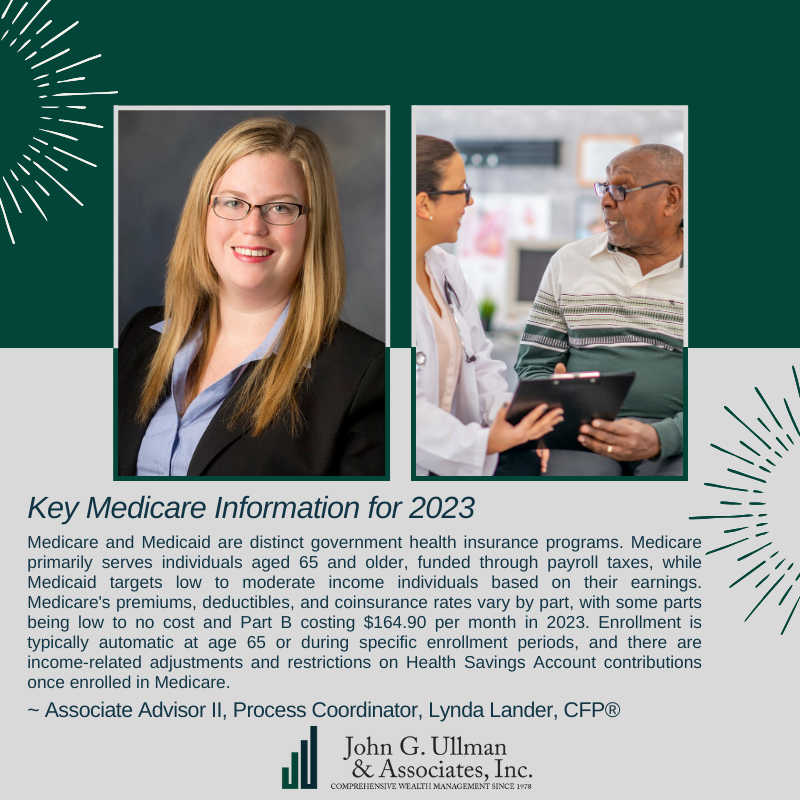Medicare vs. Medicaid- Both Government sponsored health insurance
- Medicare’s beneficiaries are primarily age 65 and older or meet other exceptions. Beneficiaries have paid into the Medicare system through payroll taxes over their working life.
- Medicaid’s beneficiaries are low to moderate income individuals. This program is dependent on income.
Premiums:
- Part A- Most people receive this “premium free”
- Part B- $164.90 (2023) per month
- Could be more based on prior income
- Part D- Depends on chosen plan
- Could be more based on prior income
Deductibles:
- Part A- Hospital Deductible: $1,600 (2023) for each benefit period
- A Benefit period starts the day you are admitted as an inpatient in a hospital or Skilled Nursing Facility (SNF) and ends when you have not received inpatient hospital care or skilled care in SNF for 60 days in a row.
- If you go into a hospital or a SNF after one benefit period has ended, a new benefit period begins.
- Part B- $226 (2023) per year
- Part D- Depends on chosen plan
Coinsurances:
- Part A:
- Days 1-60: $0 coinsurance after you pay your Part A Deductible
- Days 61-90: $400 Per day
- Days 91 and beyond:
- $800 for each lifetime reserve day (up to 60 over your lifetime)
- All costs after you use your lifetime reserve days
- Part B: 20 % of the Medicare-approved amount after you pay your deductible
- Part D: Depends on chosen Plan
- Depending on costs of prescriptions taken, you may be subjected to the Coverage gap pricing, also known as the donut hole
What’s covered? A few examples:
- Part A:
- Inpatient hospital care
- Inpatient skilled nursing care, after qualifying event(s)
- Part B:
- Medically necessary doctors’ services
- Medically necessary Durable Medical Equipment (DME)
- Many preventative services
- Part D:
- Prescribed medication on a list of covered drugs (Formulary)
Options:
- Original Medicare, you can add a supplemental plan and Part D
- Medicare Advantage (Part C)- some include or you can add on extra coverage such as vision or dental
When to sign up:
- If you are collecting Social Security, you’ll automatically be enrolled when you turn 65
- If not, you’ll need to enroll yourself during your Initial Enrollment Period or Special Enrollment Period (SEP).
- Initial enrollment period- the 7 month period that begins 3 months before and ends 3 months after the month you turn 65
- Special enrollment period- a period of time that exempts/excuses you from late enrollment penalties because you were covered under a group health plan based on current employment.
- This is an 8-month period that begins the month after the employment ends or the coverage ends, whichever happens first.
Important things to know:
- You can no longer contribute to an HSA once you sign up for Medicare.
- Could have up to a 6-month look-back, where you are not able to contribute if you sign up after you turn 65.
- You could have higher premiums based on “Income Related Monthly Adjustment Amount” (IRMAA), calculated annually using your tax return information from 2 years prior
- If you miss the enrollment period, you could be subjected to a late enrollment penalty, which could be in place for the entire time you have Medicare.







